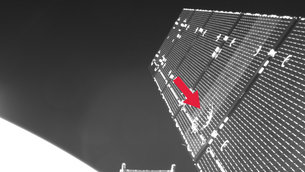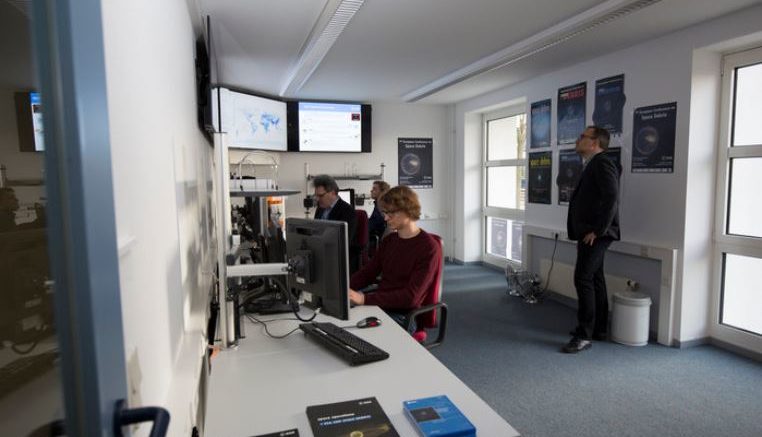6 May 2019
Solving the growing problem of space debris will require everyone who flies rockets and satellites to adhere to sustainable practices, which doesn’t always happen. Now there will be a way to recognise those who do.
We increasingly rely on satellites for every-day activities like navigation, weather forecasting and telecommunications, and any loss of these space-based services could have a serious effect on our modern economies.
Yet vital orbital pathways around Earth are becoming more congested with trash, such as abandoned satellites and rocket upper stages or debris fragments from old satellites that have exploded.
“There are numerous debris reduction and mitigation guidelines that can be applied at the design, manufacturing, launching, operating or disposal stage of any mission, but the challenge has been getting the global community to apply these in a consistent way,” says Holger Krag, Head of ESA’s Space Debris Office.
“Applying these guidelines generally adds cost or reduces the useful life of a satellite, even if only slightly, so it’s always been a tough sell,” says Holger.
Space: how to build a satellite that won’t end up as dangerous debris Access the video
In a bid to address this issue, and to foster global standards in debris mitigation, the World Economic Forum will work with the Massachusetts Institute of Technology Media Lab and ESA to launch a new ‘Space Sustainability Rating’ (SSR), a concept initiated by the Forum’s Global Future Council on Space Technologies.
“The global economy depends on our ability to operate satellites safely in order to fly in planes, prepare for severe weather, broadcast television and study our changing climate,” says Danielle Wood, founder and director MIT Media Lab’s Space Enabled research group.
“In order to continue using satellites in orbit around Earth for years to come, we need to ensure that the environment around Earth is as free as possible from trash leftover from previous missions.”
The new rating system will also be supported by Bryce Space and Technology, a firm providing services in strategy, market analytics and policy for the space industry with offices in the US and UK, and a team from the University of Texas at Austin, USA with expertise in orbital dynamics and space law.

Debris analysts at work
Similar to rating systems such as the LEED certification used by the construction industry, the Space Sustainability Rating aims to ensure long-term sustainability by encouraging and rewarding responsible behaviour amongst all space actors, including designers, manufacturers, launch providers, spacecraft operators and even government agencies.
“Together with our collaborators, we aim to put in place a system that has the flexibility to stimulate and drive innovative sustainable design solutions,” says Stijn Lemmens, a senior space debris mitigation analyst at ESA.
“We also aim to put in the spotlight those missions that contribute positively to the space environment.”
Today, there are more than 22 000 debris objects regularly tracked in orbit using radars and other methods, and any one of these could damage or destroy a functioning satellite if a collision were to occur.
In 2018, ESA-operated satellites had to conduct 27 debris avoidance manoeuvres, a number that is growing year by year.

Sentinel-1A fragment impact in space
Later this year, ESA Member States will consider a range of new proposals related to space debris at the Space19+ council meeting. These include developing and demonstrating an automated collision avoidance system, an urgent need in view of the enormous constellations of small satellites that will be deployed by commercial companies in the next few years, and developing a European industrial capacity to conduct in-orbit servicing by flying a first-of-its-kind debris-removal mission.
The new SSR initiative is to be announced today at the Satellite 2019 conference in Washington, D.C., an international forum for companies, academia and agencies working in space.
Source: ESA












Be the first to comment on "Space debris: recognising sustainable behaviour"